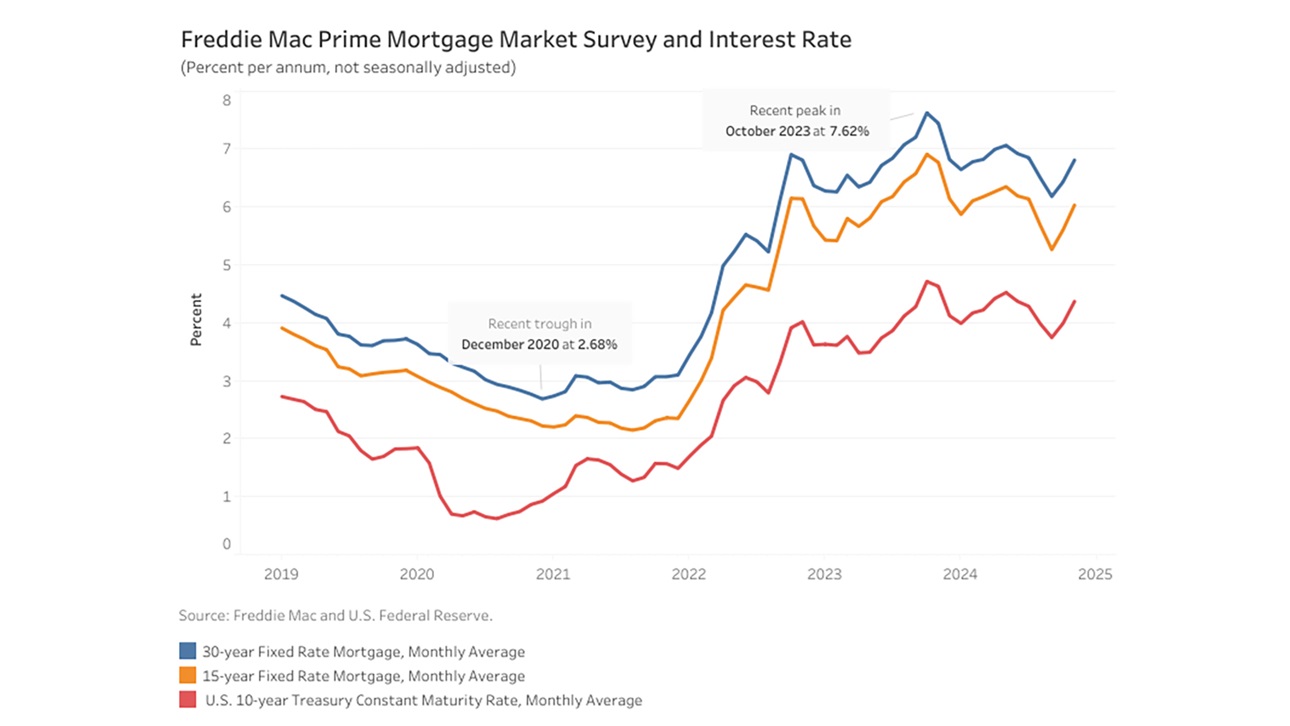Mortgage Rates Rise in November Amid Post-Election Market Volatility

Mortgage rates climbed in November, driven by market volatility and a surge in Treasury yields following the recent elections. On the day after the election results, the 10-year Treasury yield spiked by 14 basis points (bps), setting the stage for further rate increases throughout the month.
According to Freddie Mac, the average rate for a 30-year fixed-rate mortgage increased 38 basis points from October, reaching 6.81%. Meanwhile, the 15-year fixed-rate mortgage saw an even steeper increase of 43 bps to land at 6.03%.
The 10-year Treasury yield, a key benchmark for mortgage rates, averaged 4.37% in November — 38 bps higher than October’s average. This increase reflected heightened market uncertainty and persistent volatility.
NAHB Economist Catherine Koh shares forecasts for how these rates may be impacted following the activities of the Dec. 17-18 meeting of the Federal Reserve in this Eye on Housing post.
Latest from NAHBNow
Jan 07, 2026
Mortgage Rates End 2025 at the Lowest Level of the YearLong-term mortgage rates have been declining since mid-2025 and ended the year at their lowest level since September 2024.
Jan 06, 2026
A Beginner’s Guide for Builders to Save Time and Improve Communication with AIWhile some have been quick to adopt artificial intelligence into their personal lives and business practices, others are doing so much more gradually — or not at all — because they may feel skeptical or intimidated. This month, NAHB will host a weekly series of free webinars exclusively for NAHB members that will offer a simple, practical introduction to AI.
Latest Economic News
Jan 07, 2026
State-Level Employment Situation: November 2025In November 2025, employment levels were largely unchanged across all states, with year-over-year growth holding near 2%. In contrast, construction employment showed greater variation, with some states experiencing declines of up to 7.5% while others posted gains approaching 10%.
Jan 07, 2026
Construction Job Openings Increased in NovemberThe count of open, unfilled positions in the construction industry increased in November, per the delayed Bureau of Labor Statistics Job Openings and Labor Turnover Survey (JOLTS). The current level of open jobs is down measurably from two years ago due to declines in construction activity, particularly in housing.
Jan 06, 2026
Mortgage Rates End 2025 at the Lowest Level of the YearLong-term mortgage rates have been declining since mid- 2025 and ended the year at their lowest level since September 2024. According to Freddie Mac, the 30-year fixed-rate mortgage averaged 6.19% in December, 5 basis points (bps) lower than November. Meanwhile, the 15-year rate declined 3 bps to 5.48%.
